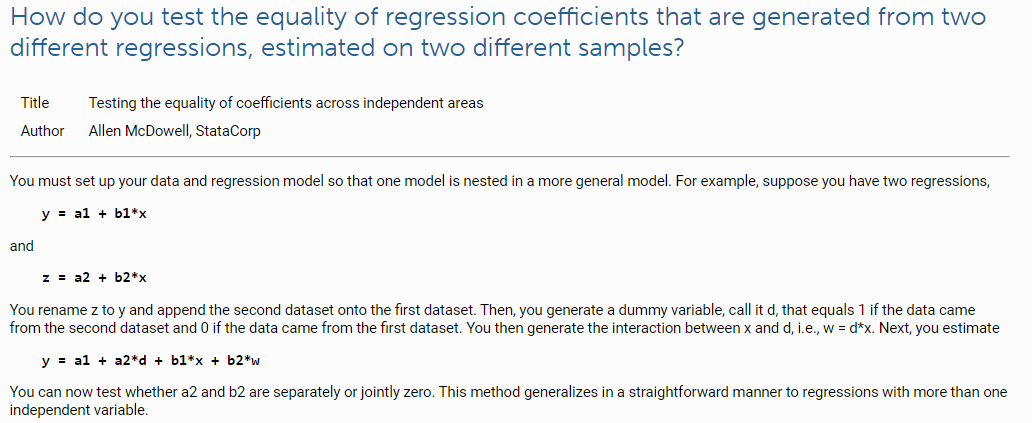I have a regression model of y = a + b * x and both variables are continuous. I've found that the coefficient of x, which is b, is statistically significant in the regression y = a + b*x.
Now I want to test whether the coefficients of x will be different for small and large values of x if I partition x into two groups (small vs. large). For example, how can I test whether b1 and b2 are statistically different?
y1 = a1 + b1 * x, for x < a cutoff value of x (small values of x)
y2 = a2 + b2 * x, for x >= a cutoff value of x (large values of x)
I found the method discussed in the Stata FAQs can be helpful https://www.stata.com/support/faqs/statistics/test-equality-of-coefficients/
However, I am not sure if it is OK that my y and z are essentially the same variable, i.e. y1 for small values of x and y2 for large values of x.
Also, one answer to the question How to compare two regression slopes for one predictor on two different outcomes? said the dependent variables in the method above, namely y and z, need to be independent. If it is true, how can I test my y1 and y2 are independent from each other?

